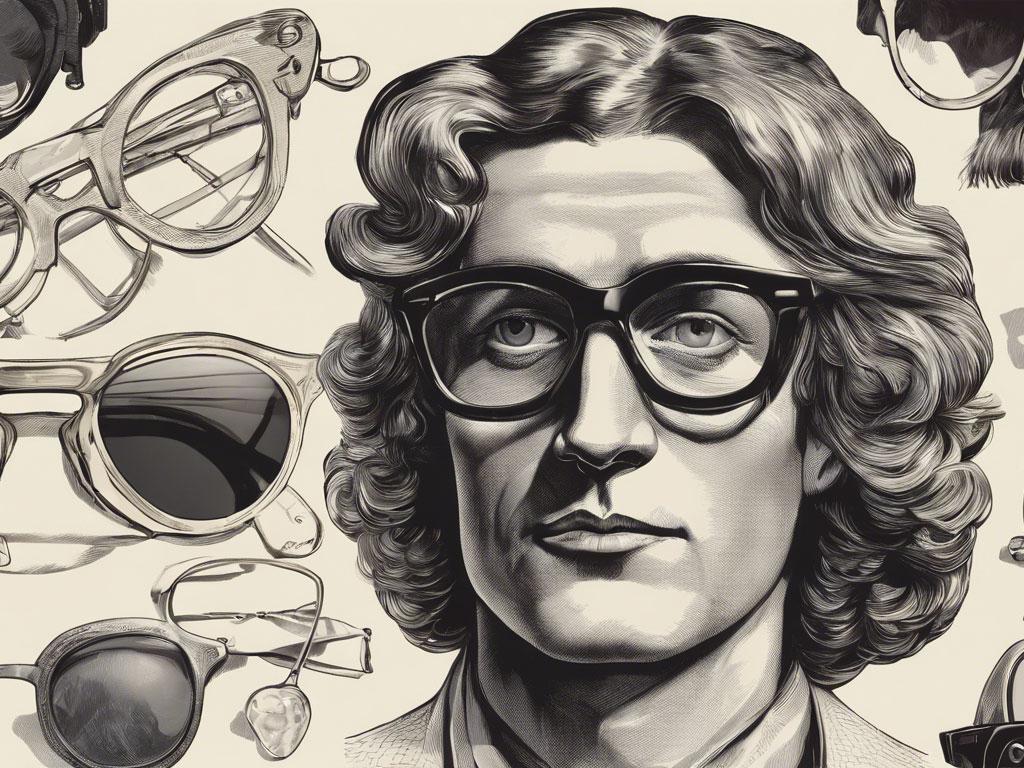
When Were Glasses Invented? An In-depth Look into the History of Eyewear
The origins of eyeglasses can be traced back to ancient civilizations like the Romans and Greeks, who used primitive magnifying glasses made of glass or water-filled spheres 3 6. The first documented wearable glasses featuring convex lenses set into frames appeared in Italy during the 13th century 1 2 3 4.
These early glasses were utilized for magnifying text, marking a crucial step in humanity’s cultural history by allowing individuals with vision impairments to play a more active role 2. The article delves into the emergence of corrective lenses, the evolution of frames and styles, and explores the significance of this revolutionary invention considered among the most important alongside fire and the wheel 2 5.
Early Developments
The earliest vision aids were primitive and rudimentary, yet they paved the way for the eventual invention of glasses. One of the first known aids was the “reading stone,” a semi-spherical lens made of rock crystal and quartz that magnified text, developed by Arab scholar Ibn al-Heitam in the 11th century 2. These were used by monks in the Middle Ages to aid in reading religious texts 6 7.
Another early development was the use of polished, transparent quartz domes by Italian monks around 1000 AD to correct for farsightedness 8. The Romans had also discovered the ability to use glass spheres as small magnifying glasses to enhance their ability to see small text 4.
The first true pair of glasses was invented at the Murano glassworks in Venice, Italy, in the late 13th century 2 8. These “rivet glasses” consisted of two convex lenses placed in wooden rings connected by a rivet 2. This marked a significant milestone, as the first wearable glasses known to history appeared in Italy during the 13th century, featuring primitive glass-blown lenses set into wooden, leather, or animal horn frames 4.
- The first vision aid was the “reading stone” developed by Arab scholar Ibn al-Heitam in the 11th century, which was a semi-spherical lens made of rock crystal and quartz that magnified text 2.
- In the Middle Ages, reading stones made of polished crystal were used by monks to aid in reading religious texts 6.
- Around 1000 CE, “reading stones” – flat-bottom, convex glass spheres that magnified text – were used by monks 7.
- The first pair of corrective eyeglasses was invented in Italy between 1268 and 1300, consisting of two magnifying lenses connected by a hinge 7.
Emergence of Corrective Lenses
The emergence of corrective lenses marked a significant milestone in the evolution of eyeglasses, addressing various vision impairments and enhancing visual clarity. Some notable innovations include:
- Bifocal Lenses: Invented by Benjamin Franklin in 1784, these lenses combined distance and reading prescriptions in a single lens, allowing people with both near and far-sightedness to use one pair of glasses 2 4 7.
- Punktal® Lenses: Introduced by ZEISS in 1912, Punktal® lenses allowed wearers to see clearly through the peripheral areas of the lens, a major improvement over previous designs that often caused distortion 2.
- Astigmatism and Trifocal Lenses: Concave cylindrical lenses for astigmatism were invented by English astronomer George Airy in 1825, followed by trifocal lenses in 1827, combining distance, intermediate, and near-vision correction 7.
- Progressive Lenses: Arriving in 1959, progressive lenses transformed eyeglass functionality by providing a gradual transition between distance and near-vision prescriptions within a single lens 7.
Corrective lenses work by altering the direction of incoming light waves to focus the image on the retina at the back of the eye. Nearsightedness occurs when the eyeball is too long, causing light to focus in front of the retina, while farsightedness results from a too-short eyeball, causing the focal point to be behind the retina 8. Presbyopia, the loss of lens elasticity that hinders near-vision focus, is also addressed by corrective lenses 8.
Evolution of Frames
The evolution of glasses frames has been a remarkable journey, reflecting changing styles, materials, and technological advancements over the centuries. Here’s a look at how frames have transformed:
- Early frames were made from materials like silk ribbons, leather, wood, and animal horn in the 17th century 1. They were simple and rudimentary, often wrapping around the head.
- In the 18th century, metal frames with ear hooks, known as “temples,” were introduced, allowing glasses to be worn hands-free 1 4. Notable examples include “Martin’s Margins” spectacles and foldable “scissor spectacles” 4.
- Over time, frames evolved to incorporate diverse materials like:
- Tortoise shell
- Horn
- Whalebone
- Iron
- Silver
- Bronze 2
- The 19th century saw the mass production of frames and lenses, making glasses more affordable for the general public 4. Styles like gold-rimmed and rimless frames also emerged.
- In the 20th century, glasses became a fashion accessory, with iconic styles like:
- Modern frames are made from lightweight plastic or polycarbonate materials, rather than heavy glass 1. They come in a wide range of styles, shapes, and colors, allowing for personal expression.
- Today, ZEISS continues to innovate with specialized lenses for various needs, such as progressive lenses, digital lenses, and lenses designed for specific activities like driving 2.
The evolution of frames has transformed glasses from a mere vision aid to a fashion statement and a reflection of personal style 6. With advancements in materials and technology, the future of eyewear promises even more innovative and functional designs 3.
Conclusion
The invention of eyeglasses marked a profound shift in human history, transcending the limitations of vision impairments and empowering individuals to engage more fully in intellectual pursuits and daily activities. From the earliest aids like reading stones to the groundbreaking corrective lenses and innovative frame designs, this remarkable journey has been a testament to human ingenuity and perseverance.
Eyeglasses have evolved from mere practical necessities to fashion statements and expressions of personal style. As we look to the future, the possibilities are endless, with advancements in lens technology and frame materials promising even greater functionality and aesthetic appeal.
To experience the timeless elegance of hand-crafted eyewear, [visit our Hand-Made Classic Designer Eyewear Collection at https://braun-classics.de/].
FAQs
What is the origin of glasses? The concept of glasses, specifically the first pair of corrective spectacles, was invented in Italy between 1268 and 1300, although the exact date remains unknown. These initial glasses were essentially two magnifying glasses connected by a hinge and were designed to sit on the nose.
How did glasses appear in the 1700s? In the 1700s, glasses were crafted from a variety of materials including gold, silver, and leather. The styles varied, with metal frames and lenses made of glass or crystal. Additionally, they were often adorned with jewels and other decorative elements to make them fashionable accessories.
Which are the earliest known glasses? The earliest known wearable glasses in history were created in Italy in the 13th century. These were basic lenses made by blowing glass and setting them into frames of wood, leather, or animal horn. The glasses were either held in front of the face or perched on the nose.
Can you describe the history of eyeglasses during the Middle Ages? In the Middle Ages, specifically from 1201 to 1300, Italian monks are believed to have crafted the first lenses shaped and ground from beryl quartz, which were used for reading and worked similarly to a magnifying glass. The Glassworks factory in Murano, Italy, was known for producing a soft glass that was well-suited for the manufacture of glass lenses.
References
[1] – https://www.fostergrant.com/help/helpful-resources/the-history-of-glasses
[3] – https://www.uoosd.com/history-of-glasses
[4] – https://allabouteyes.com/see-past-fascinating-history-eyeglasses/
[5] – https://www.aao.org/senior-ophthalmologists/scope/article/brief-history-of-spectacles
[6] – https://www.mcrsafety.com/blog/history-of-glasses
[7] – https://www.zennioptical.com/blog/history-eyeglasses/
[8] – https://now.northropgrumman.com/the-history-of-corrective-lenses

